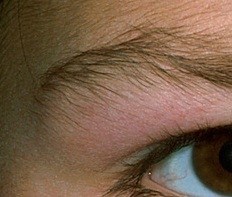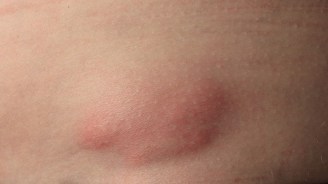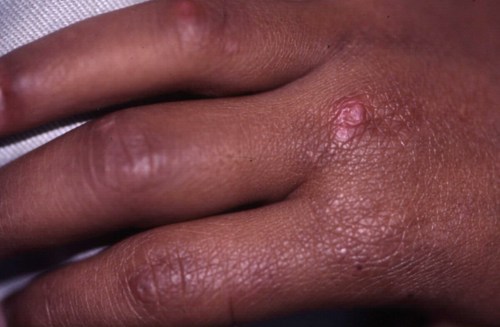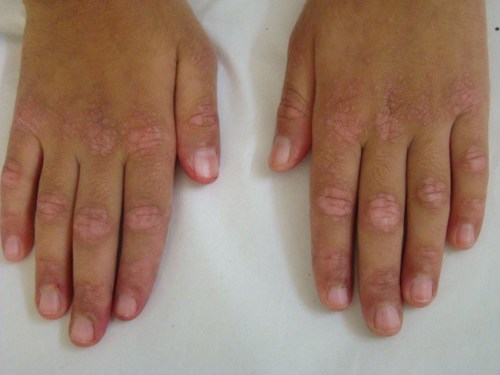Juvenile Dermatomyositis
Juvenile dermatomyositis (JDM) can present at any age, with characteristic skin involvement (malar rash, heliotrope rash over the eyelids, photosensitivity, vasculitis, nail fold capillary changes), and proximal muscle weakness which can present acutely or indolently with difficulty on stairs or fatigue on walking. Presentation may also include systemic symptoms such as malaise, fever, weight loss or anorexia. Arthritis, joint contractures and myalgia, dysphagia, dysphonia, dyspnoea, calcinosis and skin ulceration and oedema may also be present.
Calcinosis (painful or painless lumps or sheets under the skin) are a feature of late diagnosis or poorly controlled disease. Chronic skin disease can result in Gottron's papules over the knuckles, elbows or knees. Patients may have involvement of bulbar muscles and chest wall may result in risk of aspiration pneumonia.
The photograph below shows characteristic heliotrope rash over the eyelid

The photograph shows calcinosis in JDM

The two photographs below shows typical Gottron's papules over the knuckles in JDM


JDM has a broad range of severity. Unlike adult - onset DM, JDM does not tend to be associated with malignancy and routine screening for malignancy is not necessary. Diagnosis relies on clinical assessment, and if suspected then elevated serum muscle enzymes are typical. However, it is important to consider inherited myopathies which can also cause elevated muscle enzymes. Notably, most children with JDM do not require electromyography or a muscle biopsy except where the presentation is not typical. Magnetic resonance imaging (MRI) of the muscles helps to identify muscle involvement and monitor disease activity. MRI is now regarded as diagnostic. Muscle biopsy may show inflammation, fibre necrosis and small vessel vasculitis but is not required for diagnosis. Electromyogram (now rarely performed) shows myopathy/denervation.
Treatment of JDM requires high-dose corticosteroids, often given intravenously, frequently accompanied by methotrexate, although other medication such as intravenous immunoglobulin, cyclophosphamide or anti-cytokine (biologics) agents are used in severe or refractory disease. Physical therapy input is essential to optimise outcome. Interstitial lung disease can occur and gut vasculitis with potential for severe morbidity and mortality. Many (1/3) patients will develop associated arthritis in the course of their disease.

